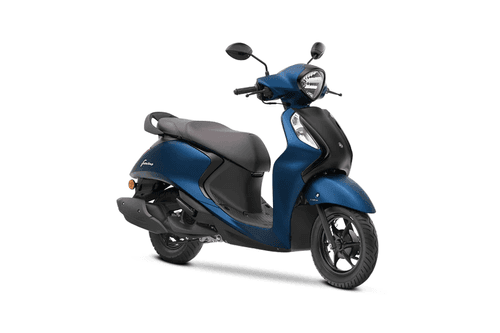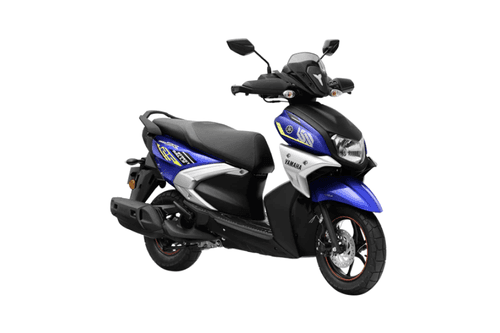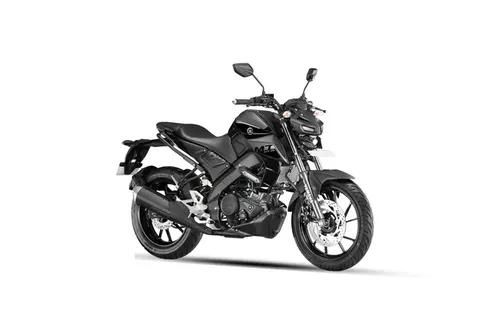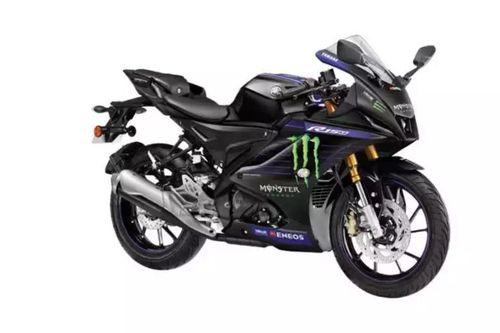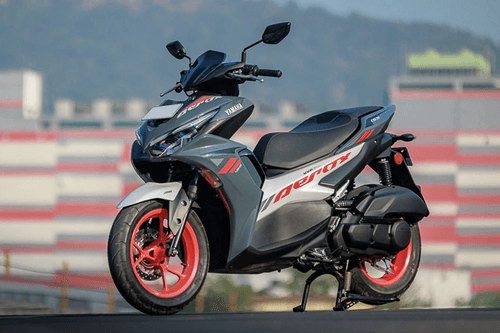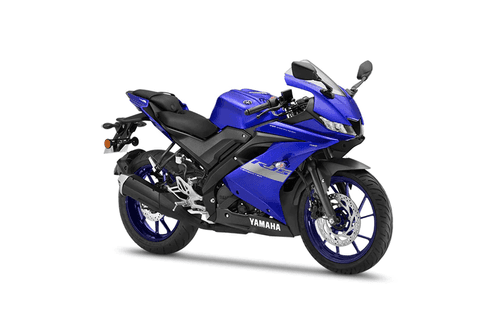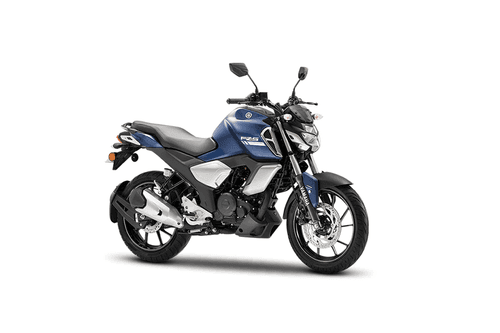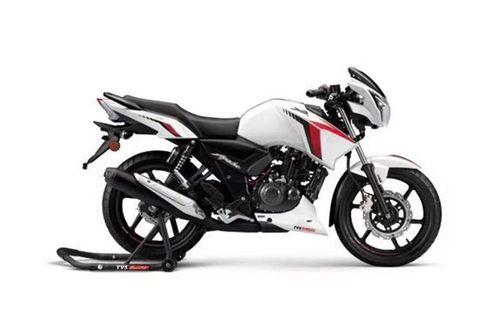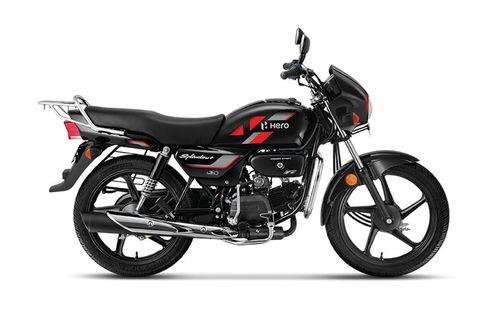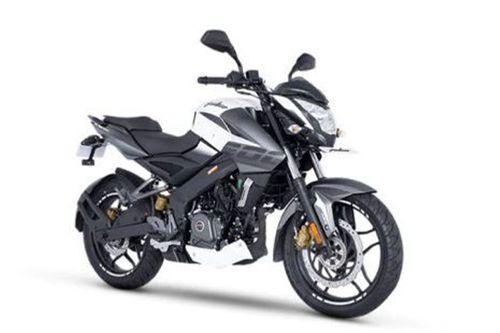About Yamaha Bikes
Yamaha’s story began with the founding of Yamaha Corporation in 1887 by Torakusu Yamaha. Initially, the company specialized in musical instruments, particularly reed organs and pianos. Over the decades, Yamaha became a global leader in the music industry. However, after World War II, the company diversified into other sectors, including motorcycles, under the leadership of Genichi Kawakami.
In 1953, Kawakami, Yamaha Corporation’s president, saw potential in Japan’s growing demand for affordable, reliable transportation. Leveraging the company’s engineering expertise, Yamaha Motor Co., Ltd., was officially established in 1955 as a separate subsidiary.
The First Motorcycle: YA-1 (1955)
Yamaha’s debut motorcycle, the YA-1, was a 125cc, two-stroke single-cylinder bike. Dubbed the "Red Dragonfly," the YA-1 was inspired by German engineering (particularly the DKW RT125) but refined with Yamaha’s precision. It quickly gained a reputation for quality and performance.
The YA-1 made a strong impact by winning the 3rd Mount Fuji Ascent Race in 1955 and dominating other competitive events in Japan, setting Yamaha on the path to becoming a performance-driven motorcycle brand.
Expansion and Innovation (1950s–1960s)
In 1957, Yamaha launched the YB-1, a more accessible version of the YA-1, and the YA-2, featuring improved suspension and a sleeker design. Yamaha then introduced its first 250cc motorcycle, the YDS-1, in 1959, marking its entry into larger displacement categories. The YDS-1 boasted dual carburetors and a five-speed gearbox, appealing to sportbike enthusiasts.
During this period, Yamaha began expanding internationally, establishing its first overseas subsidiary in Thailand in 1964. By the late 1960s, Yamaha had gained recognition in the United States and Europe for its high-performance two-stroke bikes, including the iconic RD series.
Entering the Scooter Market (1960s–1970s)
Yamaha ventured into scooters during the 1960s to address urban mobility needs. Early models like the Yamaha Mate and Yamaha Townmate catered to commuters seeking practical and fuel-efficient vehicles. Yamaha’s scooters were particularly popular in Asia, where urbanization created a demand for compact transportation.
In racing, Yamaha’s two-stroke dominance was evident in Grand Prix events. The company won its first World Championship in 1963 with Fumio Ito riding a Yamaha RD56. Yamaha became a formidable competitor, winning multiple championships in the 125cc and 250cc classes.
Four-Stroke Revolution and Global Expansion (1970s–1980s)
As environmental regulations tightened, Yamaha transitioned to four-stroke engines. The XS650, introduced in 1968, was Yamaha’s first four-stroke motorcycle. Known for its parallel-twin engine, it appealed to riders seeking smoother performance.
Key milestones during this era included:
Launch of the Yamaha DT-1 (1968) - The world’s first true off-road motorcycle, it pioneered the dual-sport category and became a global hit.
Introduction of the Yamaha XS1100 (1978) - A large touring motorcycle with a shaft drive, showcasing Yamaha’s engineering advancements.
In 1981, Yamaha launched the Virago series, its first cruiser motorcycles, tapping into the growing popularity of American-style cruisers.
Racing Glory and Technological Prowess (1980s–1990s)
Yamaha solidified its reputation in motorcycle racing during the 1980s, with riders like Kenny Roberts and Eddie Lawson winning multiple World Championships in the premier 500cc class.
Key innovations during this time included:
- The Yamaha RZ/RD series (1980s): High-performance two-stroke motorcycles designed for sport enthusiasts.
- Launch of the Yamaha VMAX (1985): A muscle bike with a powerful V4 engine, celebrated for its raw acceleration.
- Introduction of the FZ Series (1984): The FZ750 featured a five-valve head, becoming a benchmark for sport motorcycles.
Yamaha also diversified into scooters, launching models like the Yamaha Jog and Yamaha Aerox, which became popular for their style and agility.
Entry into India (1985)
Yamaha entered the Indian market in 1985 through a joint venture with Escorts Group, producing models such as the RX100. The RX100 gained legendary status for its unmatched performance, lightweight design, and affordability, becoming a favorite among Indian riders.
In 2001, Yamaha took full control of its Indian operations, establishing India Yamaha Motor Pvt. Ltd., and expanded its lineup to include commuter motorcycles and premium scooters.
R1 Era and Supersport Dominance (1998–2000s)
In 1998, Yamaha launched the YZF-R1, a groundbreaking 1000cc supersport bike that redefined performance and agility in its segment. The R1 became a flagship model for Yamaha and inspired an entire range of sport motorcycles, including the YZF-R6.
The Fazer series and FZ series introduced in the late 2000s catered to riders seeking versatile, stylish, and affordable motorcycles.
Scooters and Urban Mobility (2000s–2010s)
Yamaha expanded its focus on scooters to meet the growing demand for urban mobility. Key scooter launches included:
- Yamaha Ray (2012)
- Yamaha Fascino (2015)
- Yamaha NMAX and Aerox (2015)
Yamaha’s scooters became particularly popular in Southeast Asia, Europe, and India.
MotoGP Success and Global Leadership (2000s–2020s)
Yamaha continued to dominate MotoGP, with legendary riders like Valentino Rossi and Jorge Lorenzo securing multiple World Championships. These victories strengthened Yamaha’s image as a performance-driven brand.
The company also developed advanced technologies such as:
Crossplane crankshaft engines for smoother power delivery in sportbikes.
Blue Core technology for improved fuel efficiency in commuter motorcycles and scooters.
Electric Mobility and Sustainability (2010s–2020s)
In response to the global shift toward sustainability, Yamaha ventured into electric two-wheelers. The company introduced electric scooters like the Yamaha E-Vino and announced plans to expand its electric mobility lineup.
Yamaha also partnered with other manufacturers, such as Honda, Kawasaki, and Suzuki, to standardize swappable battery technology.
Recent Innovations and Market Strategy (2020s)
As of 2024, Yamaha continues to lead in multiple segments:
- The YZF-R1 and MT-series remain benchmarks for performance enthusiasts.
- Models like the Aerox 155 and NMAX 155 cater to urban commuters.
- The Yamaha Tenere series appeals to off-road and touring riders.
The company’s focus on innovation, racing heritage, and customer-centric products ensures its strong position in the global two-wheeler market.
Key Milestones in Yamaha’s Journey
1955: Launch of the YA-1, Yamaha’s first motorcycle.
1968: Introduction of the DT-1, the world’s first dual-sport bike.
1985: Entry into India with the RX100.
1998: Launch of the iconic YZF-R1.
2004: Valentino Rossi’s MotoGP Championship with Yamaha.
2020s: Expansion into electric mobility and connected technologies.
Conclusion
Yamaha Motorcycles and Scooters have evolved from a small division of a musical instrument company to a global leader in two-wheelers. With a rich legacy of innovation, racing success, and customer-focused products, Yamaha continues to inspire riders worldwide, combining performance, reliability, and cutting-edge technology.
Yamaha Motor Company, established in 1955, originated as a division of the Nippon Gakki Corporation (now Yamaha Corporation), a musical instrument manufacturer. Its founder, Genichi Kawakami, utilized surplus machinery from World War II to develop motorcycles, marking Yamaha's entry into the automotive sector. The company's first motorcycle, the YA-1, was a 125cc two-stroke bike that quickly achieved racing success in Japan. This early focus on performance and innovation became Yamaha's hallmark.
Yamaha expanded globally, with its motorcycles becoming renowned for reliability and cutting-edge technology. By the 1960s, Yamaha was competing internationally, notably entering the U.S. market, and introducing larger engine models like the 250cc YD1 and the 650cc four-stroke XS-1. Over the years, Yamaha has grown into a leading global motorcycle brand, offering a diverse range of models for commuting, sport, and adventure riding
Yamaha in India
Yamaha entered the Indian market in the mid-1980s and quickly established itself as a leader in performance motorcycles. Initially operating through a joint venture with Escorts Group, Yamaha began offering iconic bikes like the RX100, which became immensely popular for its lightweight design and powerful two-stroke engine. In 2001, Yamaha Motor Company fully took over the Indian operations and became Yamaha Motor India Pvt. Ltd.
Over the years, Yamaha expanded its lineup, introducing a range of motorcycles and scooters that catered to different segments, from sporty models like the R15 to commuter-friendly scooters like the Fascino. The brand is known for its innovative technology, reliability, and focus on style and performance, making it a key player in India's two-wheeler market.
Brand USP: The Yamaha Advantage
Yamaha’s unique selling proposition lies in its performance-driven engineering, innovative features, and stylish designs. Here’s what sets Yamaha apart:
Racing DNA
With a legacy rooted in motorsports, Yamaha infuses its motorcycles with high-performance features inspired by its MotoGP heritage. Bikes like the R15 V4 and MT-15 exemplify this.
Cutting-Edge Technology
Yamaha integrates advanced tech such as Variable Valve Actuation (VVA), Bluetooth connectivity (Y-Connect), and Blue Core Engine Technology, ensuring top-notch performance and efficiency.
Stylish and Youthful Designs
Yamaha bikes and scooters are designed with a focus on modern, sporty aesthetics that appeal to young riders.
Versatile Product Lineup
From the performance-focused YZF series to the practical and stylish Fascino 125 Hybrid and Aerox 155, Yamaha caters to a wide range of riders.
Global Trust and Durability
Known for their long-lasting build and reliability, Yamaha two-wheelers enjoy the trust of millions globally.
Yamaha Bikes Latest Updates
- Yamaha unveiled the 2025 R1 superbike, designed exclusively for track use. This model features significant updates in suspension, braking, and aerodynamics, making it a top choice for racing enthusiasts.
- The popular Yamaha R125 received new colors and tech updates for 2025, including improved mobile phone connectivity.
- The 2025 XSR900 received a minor refresh, including a larger TFT dash.
- Yamaha updated the Ténéré 700 adventure bike for 2025, offering new engine and styling enhancements. The Rally version features more rugged specifications for off-road enthusiasts.
- Yamaha announced the official launching of a Legendary motorcycle - RX 100 on January 14, 2025.
Yamaha Bikes Series
Yamaha FZ Series is a line of street motorcycles known for their muscular design, performance, and affordability. Key models include:
Yamaha R Series is a family of sportbikes designed for high performance and racing. Key models include:
Yamaha Bike Price Range
- Yamaha Fascino 125 Fi Hybrid: ₹79,900 - ₹94,530
- Yamaha RayZR 125 Fi Hybrid: ₹85,030 - ₹98,130
- Yamaha FZ-X: ₹1.36 - ₹1.40 Lakh
- Yamaha Aerox 155: ₹1.48 - ₹1.51 Lakh
- Yamaha R15S: ₹1.66 Lakh
Yamaha dealers in India
Yamaha operates a comprehensive network of over 2,500+ dealerships in 736 cities across India. Yamaha showrooms provide a premium buying experience, offering customers access to its full range of motorcycles, scooters, and accessories.
Use our online dealer locator to find the nearest dealership: Yamaha Dealer Locator
Yamaha Service Centers
Yamaha has an extensive network of 1580 authorized service centers in 461 cities across India, ensuring easy access to professional maintenance and repair services for its customers.
Locate the nearest Yamaha service center using: Yamaha Service Center.
Yamaha Toll-Free Number
For any inquiries, complaints, or service requests, contact Yamaha’s Customer Care through their toll-free number: 18004201600
How to get a Yamaha Bike Loan?
Check the eligibility criteria, including age (typically 21-60 years), income stability, and a good credit score. Then, visit a Yamaha dealership or approach partnered financial institutions that offer two-wheeler loans. After submitting documents like ID proof, address proof, and income verification, the lender processes the loan. Once approved, you can receive the loan amount either directly or through the dealer, and repayment is made in easy EMIs. Financial institutions typically offer loan tenures ranging from 12 to 60 months.
Why choose CarBike360?
Choosing CarBike360 offers several advantages for car and bike buyers in India. The platform provides extensive search options, allowing you to filter vehicles by brand, model, budget, and fuel type, making it easy to find your ideal vehicle. It features comprehensive product information, including prices, specifications, and expert reviews, helping you make informed decisions.
CarBike360 also offers a convenient comparison tool to evaluate different vehicles side-by-side. Additionally, the platform connects you with trusted dealers across the country and keeps you updated with the latest automotive news and articles.
